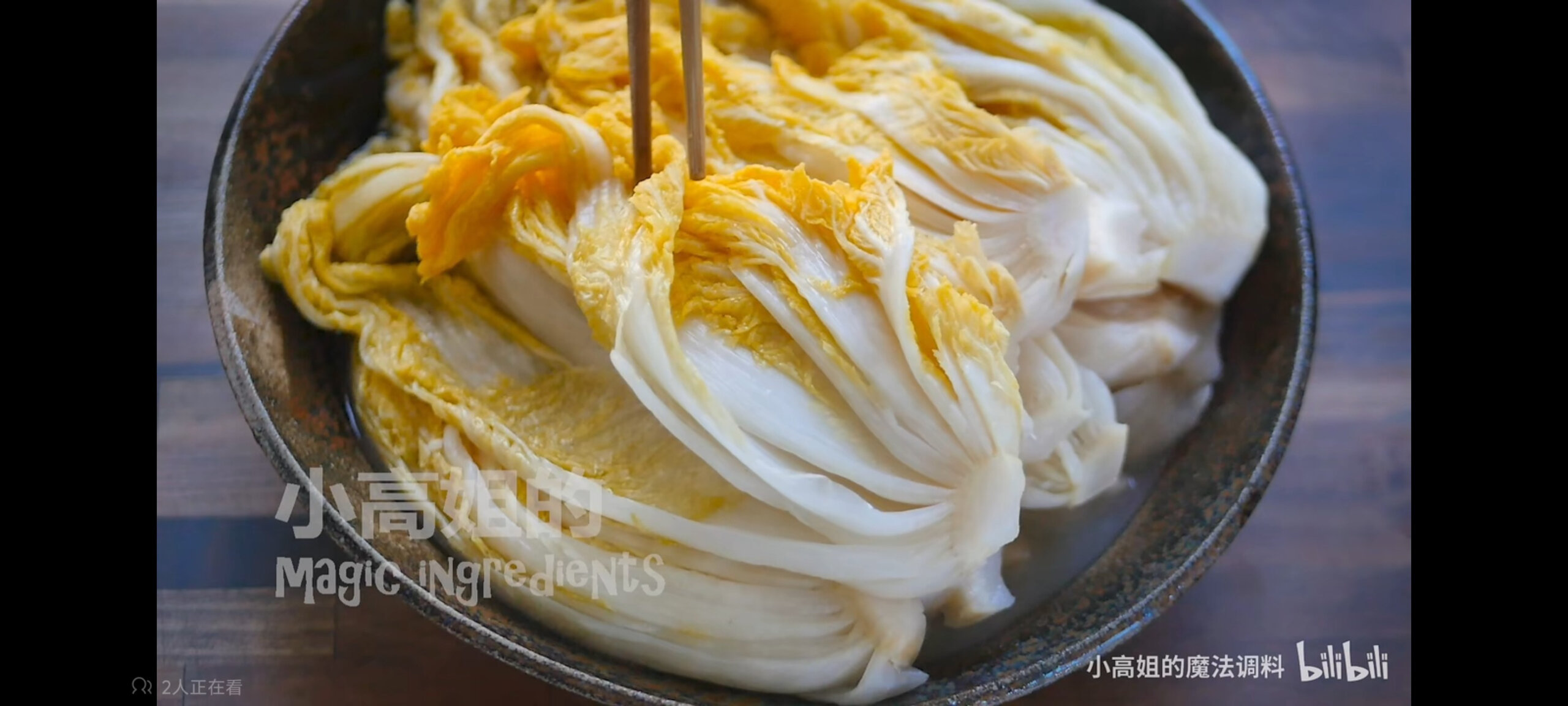Homemade Aged Kimchi (Mugeunji): The Secret to Deep Umami and Rich Probiotics
The Ultimate Mugeunji Recipe You Can Make at Home

Unlock deep savory flavors and abundant probiotics by fermenting napa cabbage at home! The natural lactic acid bacteria present in cabbage leaves ferment to produce lactic acid, creating the signature tangy and slightly sweet taste of Mugeunji. A 2% salt ratio to the weight of the prepared cabbage is the golden rule, and salt acts as a natural preservative, ensuring freshness. Make authentic Mugeunji with ease right in your kitchen!
Ingredients- 4kg Napa Cabbage (choose fresh, firm heads)
- 80g Coarse Sea Salt (2% of cabbage weight)
Cooking Instructions
Step 1
The first step to making Mugeunji is preparing the cabbage. Carefully remove any dirty outer leaves and trim the hard base of the cabbage head. If the cabbage is dirty, give it a quick rinse under cold water and pat it completely dry. If it’s clean, you can skip the washing. Keeping the cabbage as fresh as possible at this stage is important.

Step 2
Quarter each cabbage head into 8 wedges. This size makes it easier to handle and salt. The key is to generously sprinkle the coarse sea salt, focusing mainly on the thick, fibrous stems. Gently bend the stems to ensure the salt penetrates evenly. Let the cabbage sit and wilt for about 6-8 hours, turning the wedges occasionally to ensure uniform salting until the stems are pliable and bend easily.

Step 3
Now, prepare your fermentation vessel and weights. Place a large pot of water on the stove and bring it to a boil. Carefully add your glass jar and the weights (like stones or ceramic weights) and sterilize them by boiling for 10 minutes. After sterilization, carefully pour out the hot water and let the jar and weights cool down completely. Once the salted cabbage has softened and become pliable, pack the wedges tightly into the sterilized jar, layer by layer. Pour the brine (the salty water released from the cabbage) over the packed cabbage. Place the weights on top to keep the cabbage submerged, then cover the entire opening tightly with plastic wrap to create a seal.

Step 4
Leave the jar at room temperature for one day. You’ll notice the cabbage softening further, the weights sinking, and more brine accumulating. Wash your hands thoroughly and press down firmly on the weights to ensure the cabbage is completely submerged in the brine. If there isn’t enough brine to cover the cabbage, you’ll need to prepare a salt solution. Boil 1 liter of purified water, dissolve 20g of pure salt (2% concentration) in it, maintain the boiling state for 5 minutes for sterilization, and then let it cool completely. Pour this cooled brine into the jar until the cabbage is fully submerged. Minimizing the amount of air inside the jar is crucial to prevent the formation of a white film on the surface. If a white film does appear, don’t worry; it’s harmless. Securely close the lid of the jar.

Step 5
Allow the Mugeunji to ferment in a cool place, ideally around 20°C (68°F), for about 14 days. Warmer temperatures will speed up fermentation, while cooler temperatures will slow it down. After 14 days, open the jar and taste the kimchi. If it has reached your desired level of sourness, store it directly in the refrigerator. If it’s not sour enough, press down on the cabbage again with the weights, close the lid, and let it continue fermenting at room temperature for a few more days before refrigerating. The fermentation time and final taste can be adjusted to your preference.

Step 6
Homemade Mugeunji adds a wonderful depth of flavor to dishes like kimchi stew and kimchi fried rice. If you’re interested in making your own, give this recipe a try! Feel free to reach out if you have any questions or need further assistance.



